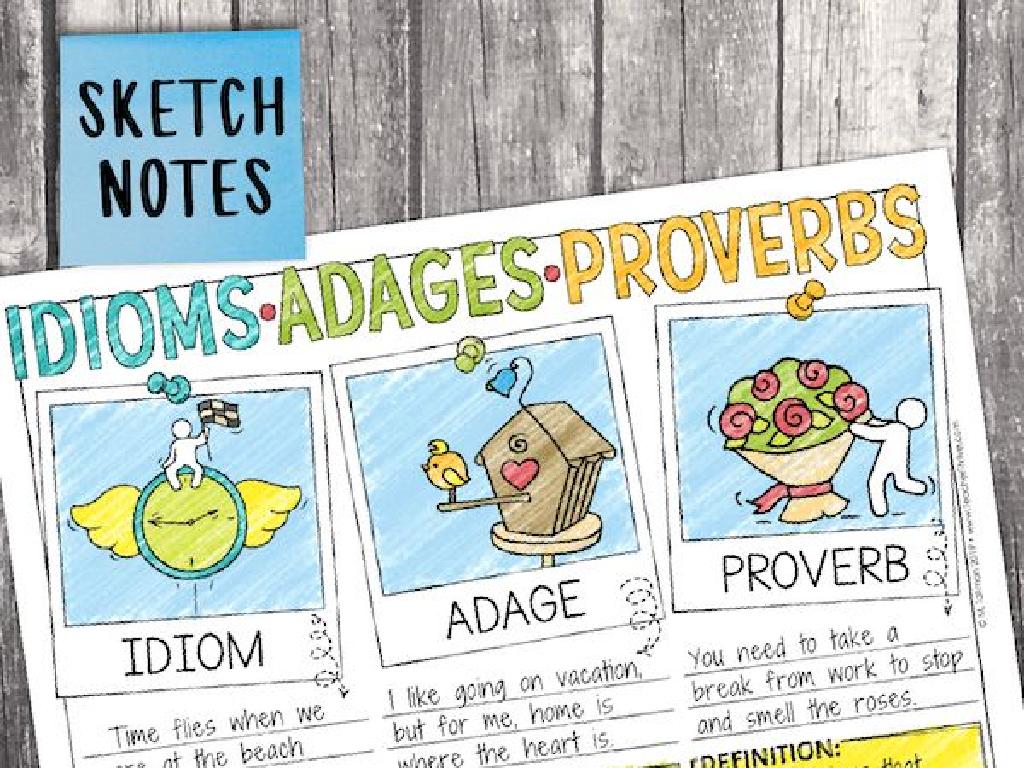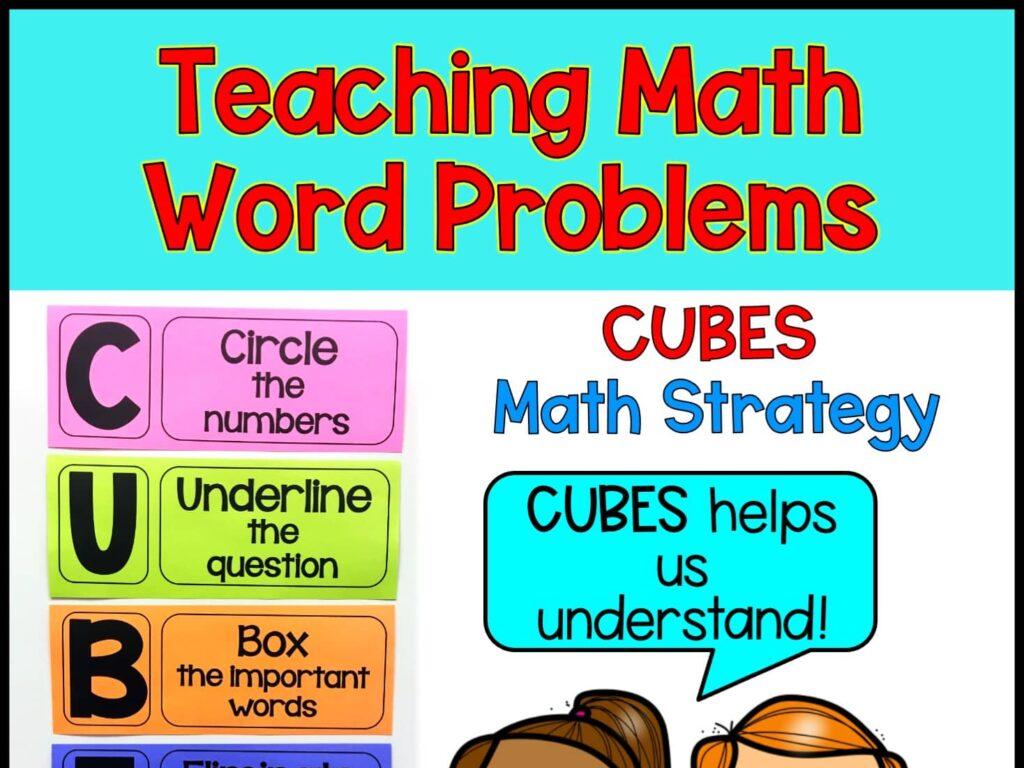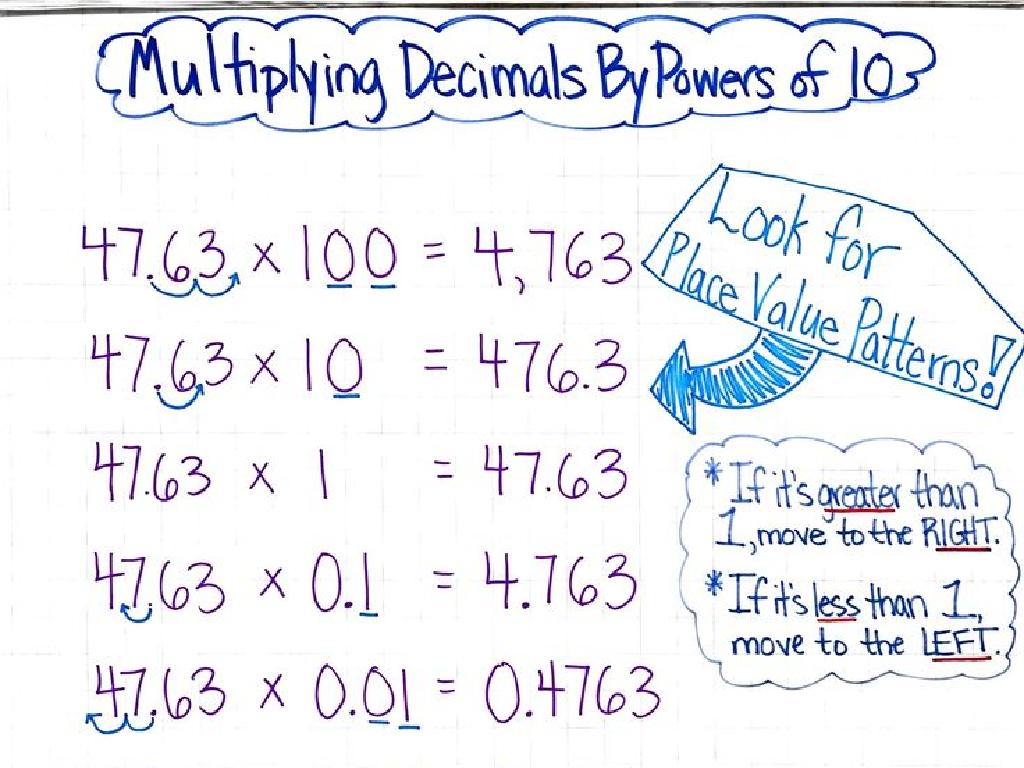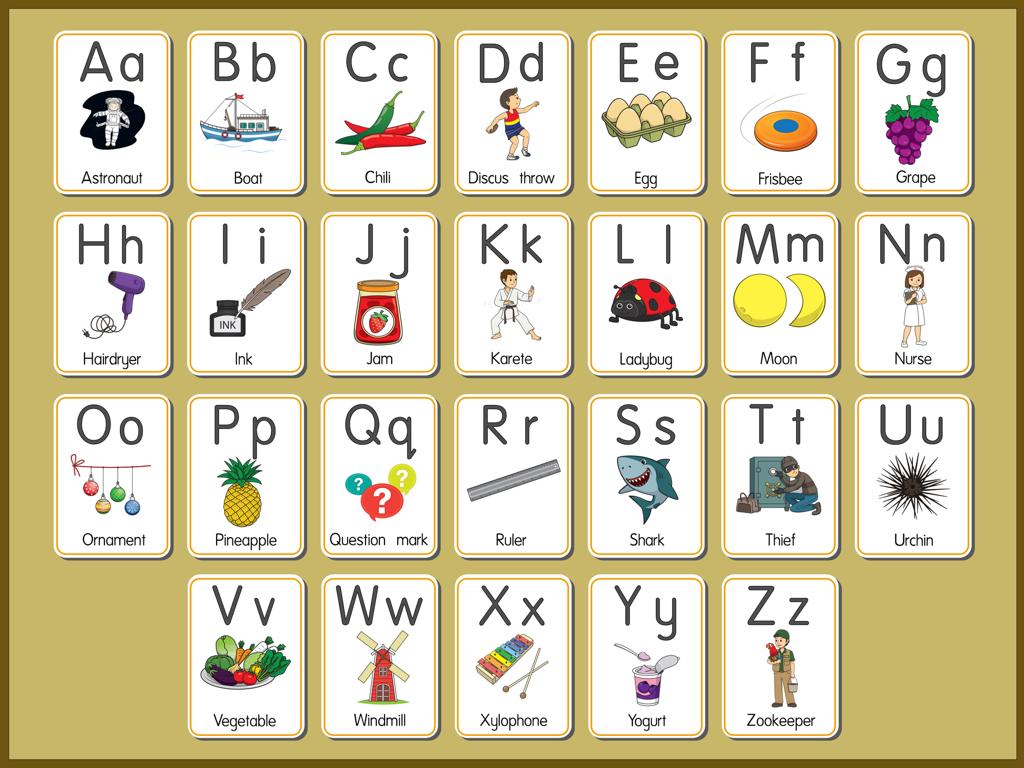Multiplication And Division Word Problems
Subject: Math
Grade: Third grade
Topic: Mixed Operations: Multiplication And Division
Please LOG IN to download the presentation. Access is available to registered users only.
View More Content
Welcome to Multiplication and Division!
– Become math detectives today
– Multiplication & division solve problems
– Understand how these operations find answers
– Use in real-life situations
– Examples: Sharing equally, groups of items
– Practice with word problems
– We’ll solve problems together in class
|
In today’s class, we’re embracing the role of math detectives to uncover the mysteries of multiplication and division. Start by explaining that these operations are tools we use to solve problems quickly and efficiently. Provide real-life scenarios where multiplication and division are applicable, such as dividing a bag of fruits equally or calculating the total number of legs in a room full of chairs. Encourage the students to think of these operations as superpowers that help them solve everyday challenges. Prepare a set of word problems that students can work on individually or in groups, ensuring that these problems are relatable and within the context of their daily experiences. This will help solidify their understanding and demonstrate the practical use of multiplication and division.
Understanding Multiplication
– Multiplication as repeated addition
– Think of multiplication as a shortcut for adding the same number over and over.
– Example: 3 x 4 as 4 added 3 times
– Instead of 4 + 4 + 4, we can simply say 3 times 4.
– Quick counting of equal groups
– If you have 3 bags with 4 apples each, multiplication tells you how many apples you have in total quickly.
– Multiplication in daily life
|
This slide introduces the concept of multiplication to third-grade students by relating it to the more familiar operation of addition. Emphasize that multiplication is a faster way to add the same number multiple times. Use concrete examples, such as combining groups of the same size, to illustrate the concept. For instance, if a student has 3 boxes with 4 candies in each, instead of adding 4 candies + 4 candies + 4 candies, they can simply multiply 3 by 4 to find the total. Encourage students to think of multiplication as a tool they use in their daily lives, such as when they share snacks with friends or count items in packages.
Understanding Division
– Division: Splitting into equal parts
– Example: Sharing 12 cookies with 4 friends
– If you have 12 cookies and 4 friends, how many cookies does each get?
– Division as the opposite of multiplication
– Multiplying 4 by 3 gives 12, so dividing 12 by 4 gives 3
– Practice with simple division problems
– Try dividing 10 by 2, or 15 by 5 to see how it works
|
This slide introduces the concept of division to third-grade students by relating it to the idea of sharing equally among friends, which is a relatable context at this age. Start by explaining that division is about splitting things into equal parts or groups. Use the example of sharing cookies to make it concrete and understandable. Highlight that division is the reverse process of multiplication, which they may already be familiar with. Encourage students to think of division as a way to find out how many items each person gets when sharing. To reinforce the concept, provide simple division problems for them to solve, ensuring they grasp the relationship between multiplication and division. This will set a foundation for solving word problems involving division.
Key Words for Multiplication & Division
– Multiplication: ‘groups of’, ‘times’
– ‘Product’, ‘multiply’ also indicate multiplication
– Division: ‘divide’, ‘share equally’
– ‘Quotient’, ‘per’ are division clues
– Words signal the operation to use
– Practice with word problems
– Example: ‘4 groups of 3’ means 4 times 3
|
This slide introduces students to the key vocabulary associated with multiplication and division, which are crucial for solving word problems. Understanding these terms helps students to identify the correct operation when faced with mixed operation problems. Emphasize that words like ‘groups of’ and ‘times’ are signals to multiply, while ‘divide’ and ‘share equally’ indicate division. Provide examples and encourage students to think of these terms as clues to solve math mysteries. In the next class, practice with actual word problems to apply these keywords in context.
Solving Multiplication & Division Word Problems
– Understand the story problem
– Read carefully to picture the problem
– Identify numbers and keywords
– Words like ‘total’, ‘each’, ‘share’ help decide the operation
– Choose: multiply or divide?
– Use clues to determine which operation solves the problem
– Practice with examples
|
This slide is aimed at helping third-grade students approach multiplication and division word problems methodically. Start by reading the problem to understand the scenario. Next, identify the numbers involved and look for keywords that suggest multiplication (e.g., ‘in total’, ‘altogether’, ‘each’) or division (e.g., ‘share equally’, ‘per’, ‘each group’). Teach students to use these clues to decide whether to multiply or divide to find the solution. Provide practice problems where students can apply these steps and discuss their reasoning. For example, ‘If 3 bags have 4 apples each, how many apples are there in total?’ requires multiplication, while ‘If 12 apples are shared equally into 3 bags, how many apples go into each bag?’ requires division.
Solving Multiplication Problems
– Read the problem carefully
– Circle numbers, underline keywords
– Find important parts: ‘in total’, ‘each’, ‘altogether’
– Write the multiplication equation
– Use ‘x’ for times, like 3 x 4 for 3 groups of 4
– Solve and check your work
– Use multiplication to find the answer, then review
|
This slide is aimed at guiding third-grade students through the steps of solving multiplication word problems. Start by reading the problem thoroughly to understand what is being asked. Teach students to identify and circle numbers that indicate quantities and to underline action words or phrases that suggest multiplication, such as ‘in total’, ‘each’, or ‘altogether’. Next, demonstrate how to translate the problem into a multiplication equation using the ‘x’ symbol to represent the operation. After solving the equation, emphasize the importance of checking their work to ensure accuracy. Provide examples of word problems and solve them together as a class, then allow students to try on their own with guidance.
Solving Division Problems
– Read the problem carefully
– Circle numbers, underline keywords
– Find important details for solving
– Write the division equation
– Use ÷ to represent division
– Solve and check your work
– Ensure your answer makes sense
|
This slide is aimed at guiding third-grade students through the steps of solving division word problems. Start by reading the problem thoroughly to understand what is being asked. Teach students to identify and circle numbers that indicate quantities and to underline action words or phrases that suggest division, such as ‘shared equally’ or ‘each’. Next, demonstrate how to translate the problem into a division equation using the division symbol (÷). Finally, encourage students to solve the equation and verify their answers by using the inverse operation (multiplication) to check if the product matches the original quantity. Provide several examples and practice problems to reinforce these steps. Remember to praise students for careful work and double-checking their answers.
Let’s Practice Together: Solving Word Problems
– Class sample: multiplication problem
– We’ll solve a problem together on the board
– Class sample: division problem
– Let’s find out how many groups or shares
– Discuss our problem-solving steps
– What clues helped us? What operations did we use?
– Understanding multiplication and division
– How are multiplication and division related?
|
This slide is designed to engage the class in a collaborative problem-solving activity. Start with a multiplication word problem, write it on the board, and invite students to solve it step by step. Repeat the process with a division word problem. Emphasize the importance of understanding the question, identifying key information, and choosing the correct operation. After solving both problems, lead a discussion on the strategies used, such as looking for keywords and understanding the relationship between multiplication and division. Encourage students to explain their thought process. This will help them grasp the concept of mixed operations in real-life scenarios. For the activity, consider problems like ‘If one pack has 4 cookies, how many cookies are in 5 packs?’ for multiplication, and ‘If you have 20 apples and put them equally into 4 baskets, how many apples are in each basket?’ for division.
Class Activity: Math Detective Mission
– Become math detectives today
– Solve worksheet problems
– Tackle multiplication and division cases
– Work in pairs for clues
– Look for keywords like ‘total’ for multiplication, ‘each’ for division
– Discuss solutions as a team
– Share your answers and strategies with your partner
|
In this engaging class activity, students will pair up and act as math detectives to solve multiplication and division word problems. Provide a worksheet with a variety of problems and encourage students to identify key words that signal whether to multiply or divide. For example, ‘in total’ might indicate multiplication, while ‘per group’ could suggest division. As they work through the problems, students should discuss their thought process and reasoning with their partners, fostering collaboration and peer learning. After completing the worksheet, have pairs share their solutions and the clues that led them to the correct answers. This activity notifies students to the importance of reading word problems carefully and understanding the context to apply the correct operation.
Detectives of Math: Mission Accomplished!
– Congrats on mastering word problems!
– Homework: Solve the worksheet problems
– Complete the provided worksheet with various problems
– Use clues to pick multiplication or division
– Look for keywords like ‘total’ for multiplication, ‘each’ for division
– Practice makes perfect mathematicians
|
Well done to the class for learning how to approach and solve multiplication and division word problems. For homework, students are given a worksheet that includes a variety of problems to reinforce their skills. Remind them to use context clues to determine whether to multiply or divide. Keywords such as ‘total’ or ‘altogether’ might suggest multiplication, while ‘each’ or ‘per’ could indicate division. Encourage them to practice regularly, as this will help solidify their understanding and ability to solve word problems efficiently. In the next class, we can review the homework answers and discuss any challenges the students faced.






